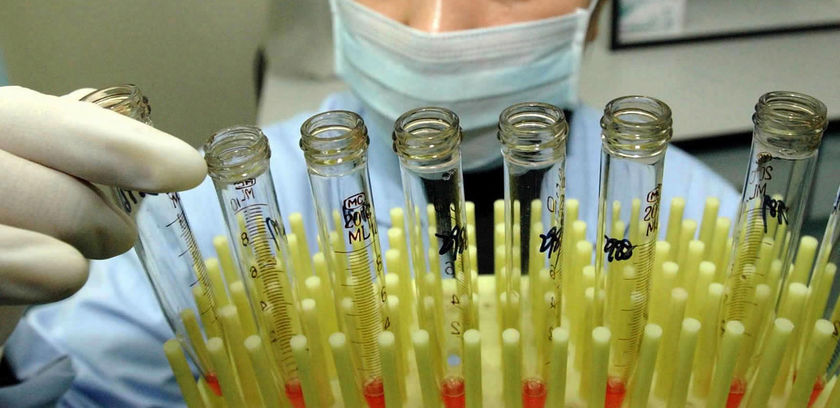
Scientists have turned an ordinary skin cell into what appears to be an embryonic stem cell. The process may eventually eliminate the controversial step of destroying human embryos for stem cell research.
The new technique involves fusing a skin cell with an existing, laboratory-grown embryonic stem cell. The fused, or hybrid, cell is "reprogrammed" to its embryonic state, Harvard University scientists report in the journal Science.
Their paper was published Sunday on the journal's Web site.
The breakthrough may one day quell the debate over stem cell research. But team member Kevin Eggan said the technology is still in early stages and is not a replacement for methods currently used to derive embryonic stem cells.
"This is just beginning of this system," he told reporters in a conference call.
Embryonic stem cells are unspecialized cells. They can grow into any type of cell found in our body.
Scientists hope embryonic stem cells can eventually be used to grow new tissue and replacement organs and to cure a range of ailments, from spinal cord injuries to Alzheimer's disease.
To study embryonic stem cells, researchers developed cell lines from stem cells, which were initially harvested from fertilized human eggs, such as those leftover from in vitro fertilization.
Because harvesting destroys the embryo, in the United States the practice has drawn the ire of many religious conservatives who regard destroying embryos as a form of murder.
New Way
The Harvard research suggests a new way to create embryonic stem cells that may one day eliminate the need to destroy fertilized human eggs.
The new type of stem cells is essentially a rejuvenated version of a person's own skin cells. A stem cell created by the new method would have DNA identical to that of the skin cell donor.
As a result, any tissue grown from the new stem cell could, in theory, be transplanted into the donor without much risk that the tissue would be rejected, Eggan noted.
But before the technique is viable, researchers must clear a technical hurdle: how to remove excess genetic information from the existing embryonic stem cell.
"Although the embryonic stem cells that we made contain the patient's genes, they also contain the embryonic stem cell genes that we started with," Eggan said. "And for the time being that's going to interfere with the usefulness of this."
Cell Fusion
The research team, led by Chad Cowan, merged human skin cells called fibroblasts with laboratory-grown embryonic stem cells.
The resulting hybrid cells contained chromosomes from both the skin cells and the stem cells. But according to several test results, the hybrid cells had the appearance, growth rate, and some key genetic characteristics of human embryonic cells.
"Even more importantly, we then went on to do experiments which really … showed that their state had really been transformed to an embryonic state," Eggan said.
If future research can clear remaining technical hurdles, the approach "may circumvent some of the logistical and societal concerns surrounding" stem cell research, the Harvard team concludes in Science.
While the new technique requires an existing embryonic stem cell, the researchers hope to learn how to reprogram adult cells without the use of an embryonic cell in the first place.
"The real payoff … ten years down the road perhaps, is to be able to directly induce those activities or factors of the adult cells and transform them to an embryonic state without having to use" an egg, Eggan said.
Linkback:
https://tubagbohol.mikeligalig.com/index.php?topic=6850.0